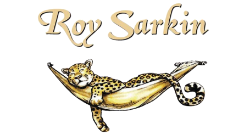Wildlife Bronze Sculptures
Kaapsehoop Stallion
Horse (Equus caballus).
Dimensions in cm: 24,5 x 8,5 x 17,5
Editions: ? of ?
The historic mining village of Kaapsehoop is situated about 25 kilometers from the town of Nelspruit in the South Africanprovince of Mpumalanga. The Kaapsehoop area offers exceptionally beautiful landscapes, complete with gushing waterfalls, indigenous forests and rugged hillsides. A large area of the grasslands of Kaapsehoop has been designated as a protected National Heritage Site and is a haven for endemic birds including breeding pairs of the endangered Blue Swallow. It is within this paradise-like setting that the legendary wild horses of
Kaapsehoop roam freely.
There are many fables as to the origin of the Kaapsehoop wild horses. During the more than 100 years that these stunning horses have roamed the area, stories have changed and been embellished on until no-one really knows what is truth and what is fiction. Whatever their origin, up to 200 feral horses enjoy the freedom of the 17,000 hectares around Kaapsehoop and are loyally protected by locals. The breed of the horses seems to be predominantly Boerperd and herd sizes range from small bachelor herds of 3 or 4, to structured herds of more than 20 horses.
Populations of free-roaming horses have existed all over the world for many years. Many of these are managed as wild life and thus are popularly called “wild” horses. In essence feral horses, where a feral horse refers to a horse living in an untamed state but whose ancestors have been domesticated. These populations formed due to horses that escaped for instance from army war camps or failed human settlements.
From far and wide people come to see the wild horses of Kaapsche Hoop. And though they find some wandering through the village, those herds are merely a fraction of the population. For the true wild horses along the escarpment are as elusive as the gold once found in this region; their origin as vague as the outline of the mountains when the mist rolls over the plains. For decades they have roamed the Kaapsehoop escarpment. They are a legacy of splendour, a legacy to preserve.
- The cool mountain climate provides a relatively healthy territory.
- The innate de-worming and tick resistance properties of the natural vegetation in the area keeps the horses relatively tick free and exempt from internal parasites.
- There is sufficient grazing and water throughout the year.
African horse sickness take their toll, the majority of threats flow from the hand of man:
- The open cast gold mining has not only left its impact on the environment, but moreover remains a danger to the herds, as horses are still found from time to time, having fallen into these open pits.
- The tar road that was built in the mid 1980’s has probably had the biggest impact on the safety of the horses as it crosses right through the centre of their natural habitat. In spite of clear road signs and warnings, many horses are involved in car accidents.
- Snaring as well as the odd poaching and traditional medicine related killings, further jeopardise the peaceful existence of these free roaming creatures.



